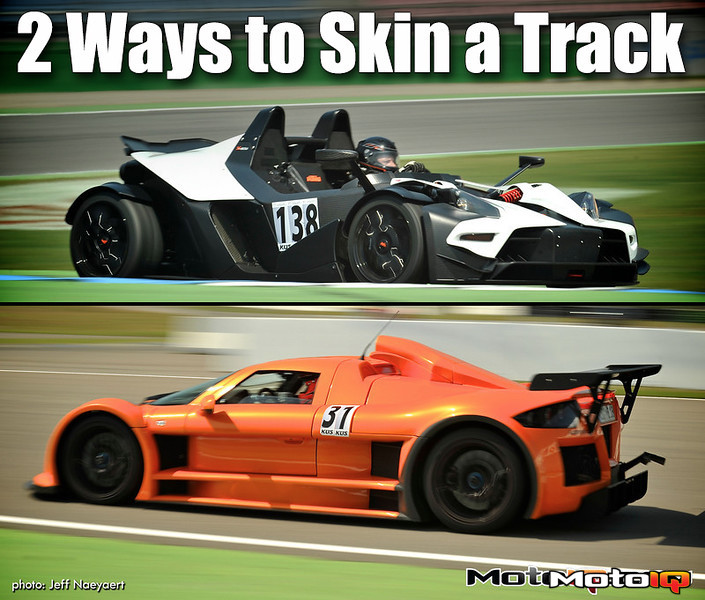,
 |
| The instrumentation is very basic by current supercar standards. No fancy TFT displays here showing your traction control settings and gas mileage. Nope. Just the most important gauge front and center: the tach. Yeah, there’s a CD player in there and it looks like it was installed as an after-thought, but this car’s raison d’etre is to be driven… fast… No time to mess around with the radio. |
 |
| Providing the motivation for the Apollo is an Audi 4.2L V8 with twin turbos added for good measure. The engine comes in three power configurations: 650 PS (641hp), 700 PS (690hp), 800 PS (789hp). The square orange thing up top should be coming from the roof scoop and feeding the airbox for the turbos. |
 |
| Here is a close-up of one of the two turbos. The turbine housing and downpipe have a thermal wrap applied that is commonly used in motorsports; think WRC and touring car racing. There also appears to be an EGT probe in the inlet section of the turbine housing. Looking at the oil feed and return lines, they appear to be wrapped in insulation to protect them from heat. Remember, if you want a reliable car, all these thermal considerations need to be taken into account. Otherwise, you end up with melted parts in your engine bay or a car-b-q. The turbo compressor side shoots straight into the intercooler followed by another short path from the intercooler to the intake manifold; the minimal piping distance maximizes transient response. Check out the Wiggins clamp used on the intercooler outlet; that’s some straight-up race car stuff borrowed from the aerospace industry. The first time I ever saw one of those clamps was on an F-16. |
 |
| This shot of the side of the car shows the side splitter, air intake for the intercooler, and I believe the rear brake ducts. |
 |
| Stepping back a bit, we can see two heat exchangers mounted horizontally above the transmission. The smaller, more rearward heat exchanger has lines going to the transmission. I’m guessing the bigger one in front of it is for the engine oil. With the bodywork up, we can now see the whole rear of the car is of tubular construction. Every suspension joint uses heim joints; no sloppy rubber bushing joints here, NVH be damned. Oh, this thing does have a license plate as seen sitting near the rear right tire. |



